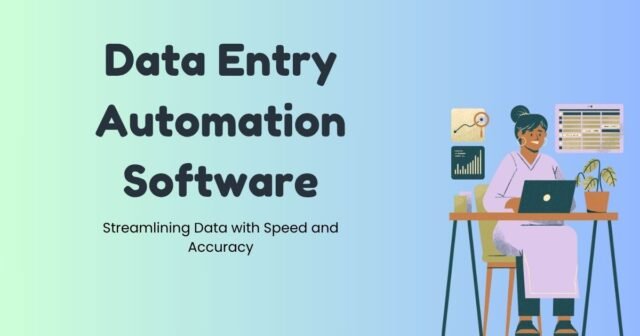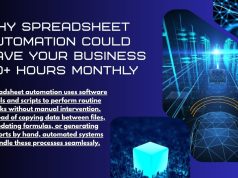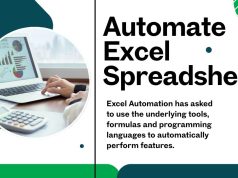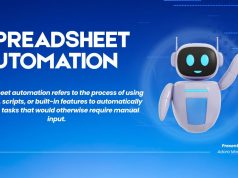It can be aggravating, slow, and inaccurate. Nevertheless, it is still a key part of many business operations, such as checking stock or handling customer information. That’s where data entry automation software comes in; a technology engineered to do away with the waste of manual data input and revolutionize the way businesses run their operations.
This post will go into the ins and outs of automated data entry, some of its advantages, the elements for which you should be on the lookout, and the best options that are available. We will also cover implementation best practices and discuss what’s to come for this rich tool.
What is Data Entry Automation Attended or Unattended?
Data entry automation – using technology to acquire, process, analyze, and store data without manual intervention. In contrast to manual processes, in which human operators manually enter data from printed, digital, fax, or scanned sources, automation software uses artificial intelligence (AI), OCR, or machine learning (ML) technology to capture and process data without human intervention.
Examples of data entry automation include scanning bills to capture vendor information, using AI to consolidate customer inquiry data, and having it input into CRM programs. Not only do these tools save time, but they also reduce human error, ensuring that data is more consistently actionable.
Advantages of Utilizing a Data Entry Automation Software
There are so many things to gain from data entry automation software that can change the way you do business.
Boosted Productivity
Through automating boring work, employees are freed up to spend their time on more high-value activities, such as strategy or the customer experience. Automation speeds up data analysis, thus helping teams do more in less time.
Improved Accuracy
Manual data input: One of the top problems with manual data entry is human error. Automation technology reduces these errors by extracting and processing data precisely, vital to data integrity and decision making.
Cost Savings
While there is an initial cost to getting up and running with data entry automation software, the cost savings over the long haul are very significant. You’ll save personnel hours, decrease mistakes and inefficient operations, and bypass fines related to compliance that result from incorrect data.
Scalability
Automation software can grow with your business. No matter if you are processing 100 invoices today or 1,000 next year, automation tools can scale with the increased volume seamlessly and without additional burden.
Enhanced Compliance
Most of the industries are subject to tight governmental regulations concerning data computing. Data entry software with automated tools has functionalities that will help you in compliance; secure data processing and audit trails are components of this.
Critical Features to Check in Data Entry Automation Product
All automation software isn’t created equal. If you’re interested in deploying the solution you need to run your business, here’s what to look for:
-
OCR – Optical Character Recognition
The OCR enables the software to extract both digital and physical document data (like the data on a receipt or within a PDF) by creating machine-readable text. -
Integration Capabilities
Select some software application that will work with the tools that you are already employing (i.e., your CRM, your ERP, and your accounting systems). This means your are assured the seamless processing and no more data silo. -
Customizable Workflows
Search for a product that allows you to customize workflows for your unique needs, such as routing information to the appropriate department or creating ladder approval systems. -
Intelligent Data Capture
Modern solutions are AI- and ML-driven for smart data capture, which auto assigns and Validates data to keep accuracy intact. -
User-Friendly Interface
There’s a higher chance that your team will embrace the software if the interface is intuitive and user-friendly. Steep learning curves can get in the way of productivity. -
Security Features
Because of the significance of privacy of data, make sure the software supports encryption, role-based access, & secure audit trails.
Best Data Entry Automation Software Tools
Following are some of the top data entry automation software known for their efficacy and functionality:
-
UiPath
A flexible robotic process automation (RPA) tool, UiPath can take over for its human and human-shaped fellow workers in a wide range of areas, including data entry. Its AI-driven capabilities and flexible workflows also make it a strong contender for businesses both large and small. -
ABBYY FlexiCapture
With ABBYY FlexiCapture, a powerful data capture solution renowned for its OCR and machine learning capabilities, businesses dealing with high volumes of documents benefit from a flexible, scalable, and configurable data capture and document processing platform. -
Kofax
Kofax provides intelligent data capture and document management capabilities that promise to increase productivity and accuracy. -
Zapier
Widely used by small businesses, Zapier allows users to automate tasks without needing to know how to code, making it useful for the non-technical members of the team.
Best Practices in Data Entry Automation Application
To truly get the most out of data entry automation, make sure you implement these best practices:
-
Assess Your Needs
And figure out what the biggest time sinks and sources of errors are in your company’s data entry. Begin automation in these areas to receive the most immediate ROI. -
Choose the Right Vendor
Research and trial several types of software to figure out which one fits your needs best (and won’t break the bank). -
Train Your Team
Make certain your employees know how to use the software properly with full training and support. -
Monitor and Optimize
Automation is not a set-it-and-forget-it answer. Continuously measure performance and make changes to the workflow as necessary to achieve maximum efficiency. -
Maintain Data Privacy
Make sure your software meets applicable data privacy regulations like GDPR or HIPAA, depending on your industry.
What The Future of Data Entry Looks Like
The future of data entry automation looks promising, fueled by the rise of AI, machine learning, and blockchain to make it even more efficient and secure. Faster requests will presumably be possible, we’ll catch errors earlier, and our data will start to tell us more things. What’s more, with more companies standardizing on automation, the tools will only continue to become easier to use and cheaper.
Automation will remain a vital solution for companies that want to both scale and adjust in an increasingly data-forward environment.
Manage Your Data Entry Tasks With Ease
Forget about simply crunching numbers and pulling in data from other sources; now is the time for data entry automation software to become an indispensable part of modern businesses that wish to streamline their processes while maintaining a high level of accuracy. By arming yourself with the correct tools and adhering to best practices, you can save time, eliminate errors, and set your company up for success.
Begin to explore your possibilities and see for yourself what the power of data entry automation can do for your business.
Whether you’re a beginner or refining your current strategy, SoftUni’s comprehensive digital PR guide offers clear steps to master media outreach and online brand management.










